#saas application development company
Explore tagged Tumblr posts
Text
#saas application development#saas application development company#saas application development services#saas development company
0 notes
Text
From Vision to Reality: Building a Thriving Online Marketplace in 2024

Are You the Next Marketplace Hero? Unleash Your Potential with Facile Technolab by Your Side
Ever dreamt of owning a bustling digital bazaar, connecting buyers and sellers with endless possibilities? Online marketplaces aren't just a futuristic fantasy anymore; they're the powerhouse business model propelling e-commerce into the next era. With global online marketplace sales projected to reach a staggering $3.5 trillion by 2024 (Statista, 2023), and 17% of all transactions predicted to go through e-commerce marketplaces (WebinarCare, 2024), the time to jump on this digital bandwagon is now.
Not just niche players, established industries are embracing the power of marketplaces: 47% of digital purchases worldwide already happen via online marketplace platforms (WebinarCare, 2024). From bustling e-commerce hubs to specialized platforms like Flexiple saving over 160 hours per month through internal marketplace tools (Facile Technolab Blog, 2023), the opportunities are limitless.
From Dream to Reality: The Roadmap and Roadblocks
Building a thriving online marketplace platform is as exhilarating as it is demanding. While statistics paint a rosy picture ��� with global sales projected to reach a staggering $3.5 trillion by 2024 – the journey from vision to reality is paved with its fair share of hurdles. These aren't insurmountable mountains, but they're definitely potholes that can snag your momentum if you're not prepared.
The Platform Labyrinth: Choosing the right platform is like finding the perfect key in a vast labyrinth. With a dizzying array of options each boasting unique strengths and limitations, navigating this landscape can be bewildering. Do you go for the tried-and-tested powerhouse with robust features but limited flexibility? Or do you dare explore the nimble newcomers offering sleek interfaces but untested reliability? The wrong choice can lead to compatibility woes, scalability nightmares, and ultimately, a frustrated user base lost in the digital wilderness.
The Engagement Enigma: Attracting users is one thing, keeping them engaged is another. In the attention-deficit digital era, your marketplace needs to be more than just a virtual storefront. It needs to be a vibrant community, a destination, a hub of experience. Building user trust and loyalty requires a laser focus on intuitive design, seamless interactions, and constant evolution. Neglect these principles, and your precious users will flit away like butterflies to the next shiny platform offering just a touch more excitement.
The Monetization Maze: Ah, the age-old question – how do you make money? Monetization for online marketplaces is no cookie-cutter affair. From transaction fees and subscription models to advertising and strategic partnerships, the options are plentiful, but the path to profitability can be a twisty maze. Finding the right balance between user experience and revenue generation is a delicate dance. Misstep on either side, and you risk either alienating your users or leaving money on the table.
These are just a few of the roadblocks that lie in wait on the path to online marketplace success. But they're not insurmountable. With the right planning, resources, and – yes – a bit of grit, these challenges can be transformed into stepping stones on your journey to building a thriving digital bazaar. Stay tuned as we delve deeper into these hurdles and reveal strategies to navigate them with confidence, turning your marketplace dream into a reality that rings with the happy cacophony of satisfied buyers and sellers.
Facing the Challenges, Forging Your Path: Facile Technolab by Your Side
While the online marketplace arena glitters with potential, the road to your MVP isn't without its detours. Choosing the right platform can feel like traversing a labyrinth blindfolded, each avenue promising its own advantages and limitations. Facile Technolab stands beside you, your seasoned cartographer, illuminating the path and helping you select the platform that will weather the storms of growth and adapt to your evolving vision. Remember Flexiple, the company saving 160 hours monthly through internal marketplace tools? We were their guide, navigating the platform labyrinth and ensuring a foundation that scaled alongside their success. (Read their story here: How we built a Marketplace Platform MVP and integrated Generative AI)
Engagement, the lifeblood of any marketplace, can be a fickle beast. Failing to captivate users leaves your platform an echoing wasteland. We are the whisperers of user experience, adept at crafting intuitive interfaces, fostering vibrant communities, and keeping users coming back for more. The thriving event management platform we helped launch is a testament to our expertise in attracting and retaining loyal user bases. (Dive deeper into their journey here: Online Marketplace Platform MVP for Event Management Industry)
The online marketplace landscape beckons, a shimmering mirage of endless possibilities. But amidst the excitement, remember - every hero needs a trusted guide. With Facile Technolab by your side, you don't just face the challenges, you conquer them. We'll be your mapmaker through the platform labyrinth, your storyteller in the Engagement Enigma, and your alchemist in the Monetization Maze.
Ready to transform your online marketplace platform dream into a reality that echoes with the happy cacophony of success? Schedule a free consultation with our experts today, and let's chart the course to your digital victory. We'll equip you with the tools, strategies, and unwavering support to write your own marketplace legend.
Don't just envision your triumph, claim it. Partner with Facile Technolab and embark on your epic marketplace journey now.
#saas development company#saas application development services#saas app development services#saas development services#outsourcing saas development#saas application development company#saas development agency#saas app development company
0 notes
Text
In the fast-paced world of technology, software as a service (SaaS) has become a dominant force, revolutionizing how we access and use software.
#saas software#saas application development company#saas app development services#saas development company#technology#software#netflix#google apps#oracle#gitlab#salesforce
0 notes
Text
The Fundamental SaaS Marketing Strategies Companies Must Consider in 2023
In 2023, staying ahead in the competitive SaaS landscape requires a strategic approach. Explore essential SaaS marketing strategies to bolster your company's success. From targeted content marketing and data-driven SEO optimization to harnessing the power of social media, discover the fundamental tactics to boost your SaaS brand visibility and engagement. Embrace the latest trends, leverage customer insights, and adapt to the evolving digital landscape for sustained growth and market dominance.
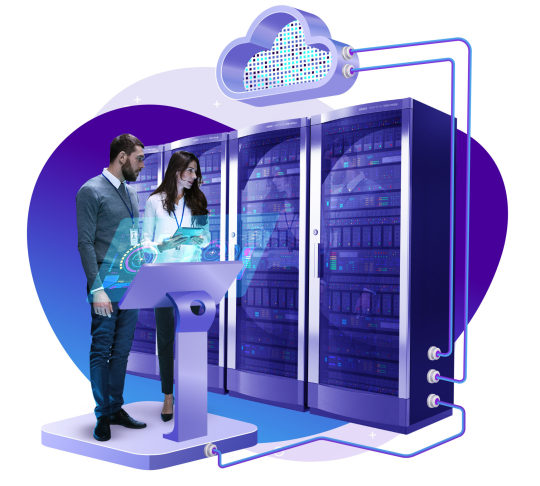
0 notes
Text
Powering Progress With SaaS Application Development
In today's digital landscape, companies are swiftly embracing Software as a Service (SaaS) solutions to meet their operational requirements. At Squillion, we excel in crafting resilient, adaptable, and highly secure SaaS applications tailored to a wide range of industries.
Read more https://www.squillion.tech/services/saas-app-development/
0 notes
Text
1 note
·
View note
Text
Best Software Development Company | SynergyTop
Level up your business with SynergyTop, a leading software development company. They boost your success by creating personalized and innovative solutions. The company developers use the latest technologies to build impressive websites and mobile apps that surpass customer expectations. For more details Call 619-349-4911 or +91 7879123770
#software development company#Custom Software Development#Software Development#custom software development company#enterprise software development#saas application development company#software development agency#software development consulting services#software development firm#software development services#software development services company#software companies in san diego#top 10 software companies in san diego#software development services company san diego#top it company in san diego#it software companies in san diego#top software companies in san diego#software companies in san diego california#san diego software companies#top 10 it software companies in san diego#software development company san diego#software development company in san diego#san diego software development companies#best software company in san diego#best software development company in san diego#it software company in san diego#san diego software development company#software developer company in san diego#best software companies in san diego#best it companies in san diego
0 notes
Text
In today’s competitive market, businesses must leverage technology to stay ahead. The right software solutions can transform businesses by optimizing operations, improving customer interactions, and ensuring efficient data management. At Rexett, we specialize in empowering businesses with tailored CRM and SaaS application development services, ensuring our clients have the tools they need to thrive.
#custom crm software development company#custom crm development company#custom crm development services#crm software development company#saas application development#saas application development company#saas application development services
0 notes
Text
How to Build a 10x More Efficient B2B SaaS Platform in 2024
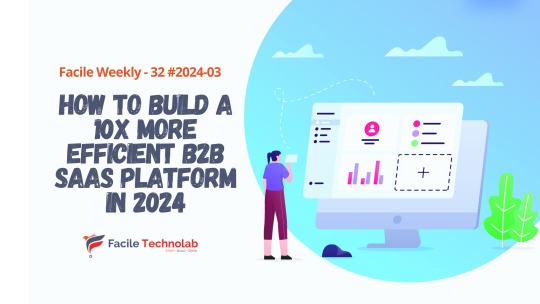
The year is 2024, and the B2B SaaS landscape is hotter than ever. From healthcare to manufacturing, every industry is embracing the power of software-as-a-service solutions to streamline operations, enhance customer experiences, and unlock explosive growth.
The market is projected to reach a staggering USD 1088 billion by 2030, and ambitious entrepreneurs are seizing the opportunity.
But with fierce competition and ever-evolving technologies, SaaS development company requires more than just a great idea. You need an edge, a way to outpace your rivals and achieve 10x more efficiency in your development process.
Demystifying the B2B SaaS Development Process in 2024
While trends paint a broad picture, building a successful B2B SaaS platform requires diving deeper into the practical tools and technologies shaping development today. So, buckle up, and let's delve into the nuts and bolts:
The Tech Stack Symphony: The architecture of modern B2B SaaS platforms is often a harmonious blend of technologies. Cloud computing reigns supreme, with platforms like AWS, Azure, and Google Cloud Platform providing scalable infrastructure and a plethora of on-demand services. For data persistence, modern SQL databases like PostgreSQL and NoSQL databases like MongoDB offer flexibility and high performance.
Microservices Take the Stage: Gone are the days of monolithic architectures. Developers are increasingly adopting microservices architectures, breaking down functionalities into independent, loosely coupled services. This approach promotes agility, scalability, and faster deployment cycles.
Containerization Containers Success: Managing and deploying microservices efficiently requires orchestration. Containerization technologies like Docker and Kubernetes are game-changers, enabling developers to package applications in standardized units for seamless deployment across diverse environments.
APIs: The Glue that Binds: Seamless integration with other systems is crucial for B2B SaaS platforms. RESTful APIs and event-driven architectures facilitate smooth data exchange and communication between your platform and external applications.
The Security Fortress: Protecting user data is paramount. Modern B2B SaaS platforms leverage robust security protocols, including encryption, multi-factor authentication, and regular vulnerability assessments, to build trust and safeguard sensitive information.
The Feature Focus: Efficiency & Customer-Centricity: Beyond the tech stack, trending features are all about improving efficiency and user experience. Low-code/no-code development tools are empowering citizen developers to contribute, while AI-powered features like chatbots and predictive analytics enhance user engagement and personalization.
The No-Code Revolution: Democratizing B2B SaaS Development
For decades, building a B2B SaaS platform meant navigating complex coding languages and relying on specialized developers. But the winds of change are blowing, and the rise of no-code platforms is shaking up the landscape. These intuitive, drag-and-drop solutions are empowering entrepreneurs and businesses of all sizes to embark on their SaaS journeys without requiring extensive technical expertise.
The impact is undeniable. According to a recent study by Research and Markets, the no-code market is anticipated to reach a staggering $58.7 billion by 2027, with a significant portion of this growth driven by B2B SaaS development. This surge isn't just hype; it's fueled by several compelling benefits:
1. Lower barriers to entry: No-code platforms eliminate the need for expensive developers, making it easier for smaller companies and non-technical founders to participate in the B2B SaaS arena. This levels the playing field and fosters innovation.
2. Faster development cycles: The visual and intuitive nature of no-code platforms drastically reduces development time. This allows businesses to iterate quickly, test ideas rapidly, and get their MVPs to market much faster than traditional methods.
3. Increased agility and flexibility: No-code platforms are inherently adaptable, allowing businesses to easily modify their platforms as their needs evolve. This agility ensures responsiveness to market changes and customer feedback, enhancing long-term success.
4. Democratization of development: No-code empowers citizen developers within businesses to contribute to platform development. This can improve collaboration, leverage diverse skillsets, and unlock hidden potential within your organization.
5. Cost-effectiveness: By reducing reliance on expensive developers and shortening development cycles, no-code platforms can significantly lower the overall cost of building a B2B SaaS platform. This makes it a cost-effective solution for bootstrapped startups and resource-conscious businesses.
While no-code platforms aren't a magic bullet, they represent a powerful trend democratizing B2B SaaS development. By leveraging their capabilities, businesses can unlock agility, reduce costs, and accelerate their journey to SaaS success. The future of B2B SaaS is undoubtedly one where no-code plays a prominent role, and staying ahead of this curve can provide a significant competitive advantage.
No-Code's Allure, Open-Source's Freedom, & Paid Kits' Power: Beyond Building B2B SaaS From Scratch
The no-code revolution has undeniably democratized B2B SaaS development, but like any technology, it has its caveats. Pre-built components offer speed and affordability, but limitations in customization, potential vendor lock-in, and security concerns can hinder future growth. So, what's the alternative to starting from scratch and wrestling with complex code?
Open-Source SaaS Starter Kits: The open-source community offers a treasure trove of pre-built code frameworks tailored to specific industries. These kits provide:
Industry-Specific Focus: From healthcare to finance, find kits pre-equipped with features relevant to your niche, saving you development time and cost.
Customizable Foundation: The open-source nature grants you access to the underlying code, empowering you to tailor features and adapt the kit to your unique needs.
Community Support: Leverage the collective knowledge and expertise of the open-source community for troubleshooting, guidance, and ongoing development contributions.
However, remember:
Maintenance Burden: Keeping an open-source kit secure and updated falls on your shoulders, requiring technical expertise and resources.
Limited Support: While the community is helpful, dedicated technical support might be scarce compared to paid options.
Potential Security Risks: Open-source code can attract vulnerabilities if not diligently maintained and secured.
Paid SaaS Starter Kits: Striking a balance, paid starter kits offer industry-specific features, faster development, and varying levels of support at a premium. You'll typically find:
Enhanced Functionality: Paid kits often go beyond basic features, offering advanced functionalities and integrations to elevate your platform.
Dedicated Support: Paid services provide direct access to technical support teams, ensuring smooth implementation and addressing concerns promptly.
Managed Security: Many paid kits incorporate automated security updates and compliance measures, reducing your security burden.
However, consider these points:
Licensing Costs: The convenience of paid kits comes with monthly or annual licensing fees, adding to your development budget.
Vendor Lock-in: Switching platforms later might require data migration and re-implementing features, depending on the kit's architecture.
Limited Customization: While offering more flexibility than no-code platforms, paid kits might still have limitations compared to fully custom development.
The Bottom Line: Neither open-source nor paid starter kits are a magic bullet. Carefully evaluate your project's needs, budget, and technical resources. Open-source kits offer freedom and community support, but require technical expertise for maintenance. Paid kits provide faster development, security, and support, but come with licensing costs and potential vendor lock-in.
Remember, no single approach is universally ideal. Consider consulting with experts who understand the nuances of each option and can guide you towards the solution that perfectly aligns with your B2B SaaS vision. By making an informed decision, you can avoid the pitfalls of starting from scratch and leverage the power of starter kits to launch your B2B SaaS platform faster, more efficiently, and with greater long-term potential.
Unveiling Your Ideal B2B SaaS Path in 2024
SaaS development company in 2024 requires navigating a complex landscape of options. From the allure of no-code to the freedom of open-source and the efficiency of paid starter kits, choosing the right path can feel like a daunting task. Worry not, intrepid innovator! Facile Technolab is here to be your trusted guide, illuminating the best strategy for your unique B2B SaaS vision.
Why Facile Technolab is your champion:
Deep Industry Expertise: We possess in-depth knowledge of various B2B industries, ensuring we understand your specific challenges and opportunities.
Technology Agnostic Approach: We're not tied to any single solution. We objectively evaluate no-code platforms, open-source/paid saas starter kits, and custom development to recommend the perfect fit for your needs.
Unwavering Transparency: We believe in clear communication and honest assessments. We'll explain the pros and cons of each option, empowering you to make informed decisions.
Holistic Support: Our guidance extends beyond just technology. We help you define your target audience, craft a compelling value proposition, and develop a roadmap for sustainable growth.
Proven Track Record: We boast a portfolio of successful B2B SaaS implementations, showcasing our ability to deliver results that matter.
Let Facile Technolab help you:
Identify your B2B niche and target audience: We'll help you define your ideal customer, ensuring your platform solves their specific pain points.
Analyze your development needs: We'll assess your technical expertise, budget, and timeline to determine the most efficient approach.
Evaluate technology options: We'll provide unbiased comparisons of no-code platforms, open-source kits, and custom development, tailoring our recommendations to your unique requirements.
Navigate implementation & beyond: We'll be your partner throughout the development process, offering guidance, support, and expertise to ensure a seamless launch and long-term success.
Don't embark on this B2B SaaS journey alone. With Facile Technolab by your side, you'll gain the clarity, expertise, and support needed to choose the most efficient and effective path. Together, we can turn your B2B SaaS vision into a thriving reality in the dynamic landscape of 2024.
Contact Facile Technolab today and schedule a free consultation! Let's discuss your B2B SaaS aspirations and explore the optimal development strategy for your success. Remember, building a remarkable B2B SaaS platform doesn't have to be overwhelming. With the right guide at your side, you can navigate the complexities and achieve your goals with confidence.
Related Resources
Top 5 mistakes when hiring SaaS Development Team and How to avoid them
Related Services
SaaS Development
Related Case Studies
FinTech Modernization and SaaS Development Case Study
Manufacturing Execution System - SaaS Platform Development Case Study
Parking Management SaaS Platform Case Study
Job Management System SaaS Platform MVP for precision component manufacturing company in Australia
More Articles related to SaaS:
Why .NET Core is a popular choice for SaaS Development?
The Future of B2B SaaS Platform Development: 9 Emerging Trends to Watch in 2024
The 3 Hidden Obstacles Holding Back Your B2B SaaS Dream
Creating Your First B2B SaaS Platform MVP: A Comprehensive Tutorial
Building Cloud-Native B2B SaaS Software Solutions: Advantages and Strategies
Why B2B SaaS Software MVPs are the Secret Sauce for Startups
The Future of B2B SaaS Platform Development: 9 Emerging Trends to Watch in 2024
#SaaS development company#saas application development services#saas app development services#saas development services#outsourcing saas development#saas application development company#saas development agency#saas app development company#saas software development companies#saas development company in us
0 notes
Text
What is software product development, and how it works?
Software product development refers to the process of designing, creating, testing, and maintaining software products. It involves the entire life cycle of a software product, from its initial conception to its deployment and ongoing updates. Software product development can be a complex and iterative process that requires collaboration between different teams, including software engineers, designers, testers, and project managers.
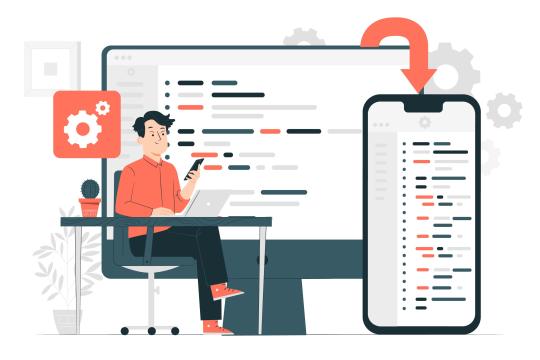
Here are the key steps involved in software product development:
Idea Generation: The process begins with generating ideas for a new software product or identifying opportunities to improve existing software.
Planning: Once an idea is identified, a detailed plan is created, including defining the product's features, target audience, and goals. Project timelines, budgets, and resource allocation are also determined during this phase.
Design: The design phase involves creating a blueprint for the software product. This includes creating user interface (UI) and user experience (UX) designs, as well as system architecture and database design.
Development: In this phase, software developers write the code to bring the design to life. They follow established coding standards and best practices to build the software product according to the defined requirements.
Testing: Quality assurance (QA) and testing are crucial steps to ensure the software product functions as intended. Different testing methods, such as unit testing, integration testing, and user acceptance testing, are employed to identify and fix bugs or issues.
Deployment: Once the software product passes testing and is deemed ready for release, it is deployed to the production environment. This involves setting up servers, configuring the software, and making it available to end-users.
Maintenance and Updates: After the software product is deployed, it requires ongoing maintenance and updates to address any issues or bugs that arise, as well as to introduce new features or improvements based on user feedback.
Software product development typically follows a systematic process that involves several stages. Here is a simplified explanation of how software product development works:
Requirement Gathering: The development team interacts with stakeholders, such as clients or product managers, to understand their requirements and expectations for the software product. This involves identifying the features, functionalities, and goals of the product.
Design and Planning: Based on the gathered requirements, the development team creates a detailed plan and design for the software product. This includes architectural design, database design, user interface (UI) and user experience (UX) design. The team decides on the technologies, tools, and frameworks to be used.
Development: The actual coding and development of the software product take place in this phase. Developers write the necessary code using programming languages, frameworks, and libraries. They follow coding standards, modular programming, and best practices to ensure a high-quality codebase.
Testing: Once the software product is developed, it undergoes various testing phases. Quality assurance (QA) engineers perform different types of testing, such as unit testing, integration testing, system testing, and acceptance testing. The aim is to identify and fix any bugs or issues before the product is released.
Deployment: After successful testing, the software product is deployed to the production environment. This involves setting up servers, configuring the software, and ensuring its availability to end-users.
Maintenance and Updates: Once the software product is deployed, it requires ongoing maintenance and updates. This includes bug fixes, security patches, performance enhancements, and adding new features or improvements based on user feedback. Regular monitoring and maintenance help ensure the software's optimal performance and usability.
Throughout the software product development process, effective project management methodologies, such as Agile or Waterfall, can be employed to streamline the development cycle, enhance collaboration, and deliver the product within the defined timelines and budgets. Regular communication with stakeholders, continuous feedback loops, and iterative development approaches also contribute to a successful software product.
#software product development company#SaaS Application Development Company#saas development services#software product development services#software product development company India#software product development
0 notes
Text

SoftGrid is an awesome, full-service web design agency offering affordable and amazing website design and development.
#Web Design & Development#Website Redesign Service#eCommerce Solutions#Fullstack Development#saas application development company
0 notes
Text
Saas application development services
Businesses are quickly implementing Software as a Service (SaaS) solutions for their operational demands in the digital age. We at Squillion are experts in creating dependable, scalable, and secure SaaS app development that serve a variety of sectors.
0 notes
Text
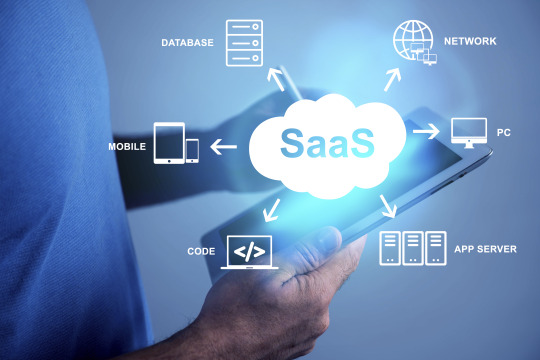
Saas Application Development Company | Saffron Tech
Saffron Tech is a reputable SaaS application development company that specializes in providing comprehensive solutions to businesses looking to develop, deploy, and manage cloud-based software applications. Their SaaS development services are tailored to meet the unique needs and requirements of each client, with a focus on innovation, scalability, and reliability. The company's SaaS applications also come with advanced security features to help businesses protect their sensitive data and intellectual property. With a commitment to innovation and client satisfaction, Saffron Tech is an excellent partner for businesses looking to leverage the power of SaaS to achieve their goals.
#Saas Application Development Company#Saas Application Development#Saas Application#SaaS development
0 notes
Text
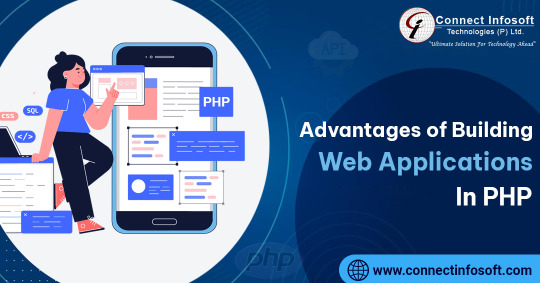
Here are advantages of Using PHP to Develop Web Applications
#Advantages of Building Web Applications in PHP#SaaS Application Development#SaaS Application Development Service in India#SaaS Application Development Company#SaaS applications#Benefits SaaS Applications#SaaS Application Development Team#Looking for SaaS App Development Company#Looking for SaaS App Designers#connect infosoft
1 note
·
View note
Text
How to Find the Ideal SaaS Application Development Company
The SaaS application development industry is rapidly expanding and becoming increasingly profitable with the rise of cloud computing. Companies are searching for high-quality SaaS application development firms that can deliver products that meet their needs and budget.
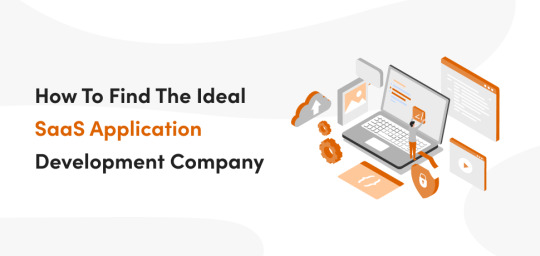
Choosing the right SaaS application development company is crucial to the success of your project. However, with so many companies available, selecting the best one can be difficult. It's important to research thoroughly and consider factors such as experience, technological understanding, and track record. Here are 5 tips for finding the best SaaS application development company:
1. Analyze and review case studies of potential providers to gain insight into their quality of services and ability to deliver results.
2. Consider pricing models to find the one that best fits your long-term revenue objectives.
3. Look for a team with technical expertise and savvy business leadership to set up SaaS projects for success.
4. Ensure the company has high-quality customer service with tailored support options.
5. Research the company's certifications, previous clients, and experience to find the right fit for your project.
To get more insights, read our latest blog post available at https://www.rdglobalinc.com/how-to-find-the-ideal-saas-application-development-company/, they understand new technologies, and whether they have an established track record of successful projects. By taking the time to pick the ideal SaaS application development company for your project, you can guarantee success.
RD Global offers a variety of SaaS application development services, including consulting, UX and UI design, architectural design, and app development. With experienced professionals and innovative solutions, RD Global is an ideal choice for your SaaS application development needs.
For a complimentary consultation, contact RD Global at https://www.rdglobalinc.com/contact/ today, and let us create the perfect app for your business.
#rdglobalinc#saas application development company#saas product development company#saas application development services#saas product development services
0 notes
Text
Creating Your First B2B SaaS Platform MVP: A Comprehensive Tutorial

Embarking on the journey to build your inaugural B2B SaaS Platform MVP? Dive into our comprehensive tutorial, demystifying the process step by step. From ideation to deployment, we'll guide you in crafting a minimal viable product that resonates with your target audience.
The ability to create a scalable software solution that solves real problems for businesses and generates recurring revenue is a compelling proposition. It starts when you've identified a pain point in some industry or stumbled upon a gap in the market begging to be filled.
Whatever is your inspiration, transforming your vision into a B2B SaaS platform requires a strategic approach, and the journey often begins with a Minimum Viable Product (MVP).
This comprehensive tutorial will equip you with the essential knowledge and steps to create a compelling B2B SaaS MVP, the cornerstone of validating your product concept and attracting early adopters.
1. Define the Problem to Solve
The foundation of any successful B2B SaaS platform rests on a deep understanding of the problem space. That's where you become the champion for your target audience. Conduct thorough market research to identify the specific pain points faced by businesses within your chosen niche.
Conduct User Interviews: Talk directly to potential customers. Understand their daily struggles, workflows, and frustrations. What tasks are time-consuming? What inefficiencies are hindering their success?
Analyze Industry Trends: Research current market trends, competitor offerings, and emerging technologies. Are there any unmet needs or untapped opportunities? Statistics show that 42% of new SaaS products fail due to a lack of market need. By validating the problem you aim to solve, you significantly increase your chances of building a solution that resonates with the market.
By clearly defining the problem and its impact, you establish the core value proposition of your MVP and lay the groundwork for a solution that truly resonates with your target audience.
2. Identify Your Target Audience With a firm grasp of the problem you're solving, it's time to define precisely who will benefit most from your solution. Your target audience is the specific group of businesses whose needs your B2B SaaS platform directly addresses.
Create Buyer Personas: Develop detailed profiles of your ideal customers. Include demographics, business size, industry, roles within the organization, and their specific challenges.
Segment Your Market: Categorize your target audience based on shared characteristics and pain points. This allows you to tailor your messaging and value proposition to resonate with different segments within your overall market.
Understanding your target audience goes beyond demographics; it's about empathizing with their unique challenges and aspirations. By crafting detailed buyer personas and segmenting your market, you ensure your MVP speaks directly to the specific needs of the businesses you aim to serve. This targeted approach significantly increases the likelihood of early adoption and valuable user feedback.
3. Prioritize Core Features for Your MVP
Now that you understand the problem and your target audience, it's time to translate that knowledge into actionable steps. This is where you define the core functionalities that will form the backbone of your MVP.
Focus on the "Must-Haves": Resist the urge to cram everything into your initial version. Prioritize features that directly address the core problem and deliver the essence of your solution. Remember, the goal here is to validate your concept, not build a comprehensive product suite.
Think "Minimum Viable Product," not "Minimum Lovable Product": While a user-friendly interface is important, prioritize functionality over aesthetics at this stage. You can refine the design and user experience in subsequent iterations based on user feedback.
Here's a helpful rule of thumb: 80% of your efforts should be directed towards solving the core problem, and 20% on building a functional and user-friendly experience. By adhering to this principle, you can efficiently develop a focused MVP that effectively validates your concept without unnecessary bells and whistles.
Remember, successful B2B SaaS platforms often evolve from humble beginnings. Focusing on core functionalities in your MVP allows you to gather valuable user feedback, iterate effectively, and ultimately build a solution that truly meets the evolving needs of your target audience.
4. Choose the Right Development Approach
With your core features defined, you need to determine the most efficient and cost-effective approach to develop your MVP. This decision hinges on factors like your technical expertise, budget, and desired timeline.
In-House Development: Building your MVP in-house requires a skilled development team with expertise in relevant technologies. This approach offers greater control over the development process but can be time-consuming and resource-intensive, especially for first-time founders.
Freelancers: Hiring freelance developers allows you to access a wider talent pool and potentially achieve cost-effectiveness. However, managing multiple freelancers can be challenging, and ensuring consistent quality requires careful vetting and clear communication.
SaaS Development Agencies: Partnering with an experienced SaaS development agency offers access to specialized expertise, established development processes, and potentially faster time-to-market. This option often comes with a higher cost compared to freelance work but can be a good fit for founders seeking guidance and a streamlined development experience.

There's no single "right" answer when it comes to development approaches. Carefully assess your resources, strengths, and budget to make the best decision for your specific needs. Remember, the goal here is to build a functional MVP that validates your concept efficiently, and choosing the right development path will significantly impact your success.
5. Launch, Gather Feedback, and Iterate
With your MVP developed and deployed, it's time to showcase your creation to the world! Launching your MVP, however, marks not the end, but rather the beginning of your journey. Here's where the true learning and refinement begin:
Gather User Feedback: Encourage early adopters to provide honest feedback on their experience. Utilize surveys, conduct interviews, and actively engage with your users to understand their pain points, suggestions, and areas for improvement.
Embrace the Iterate-Adapt-Improve Cycle: Analyze the collected feedback and prioritize functionalities for further development. Remember, your MVP is a living document, not a finished product. Be prepared to iterate and adapt based on user insights to ensure your B2B SaaS platform evolves to meet the ever-changing needs of your target audience.
Statistics show that only 0.01% of startups achieve product-market fit with their initial offering. The iterative process fueled by user feedback is crucial for refining your MVP and ultimately building a B2B SaaS platform that gains lasting traction in the market. By embracing continuous improvement and actively listening to your users, you position your solution for sustainable growth and success.
6. Additional Considerations for Success
While the previous steps provide a solid foundation for building your B2B SaaS platform MVP, here are some additional considerations to keep in mind:
Marketing and Sales Strategy: While your MVP is in its initial stages, begin crafting a marketing and sales strategy to generate awareness and attract potential customers.
Pricing Strategy: Developing a pricing model that aligns with the value proposition of your MVP and resonates with your target audience is crucial. Consider offering freemium models or limited-time introductory pricing to attract early adopters.
Security and Scalability: Even at the MVP stage, prioritize security measures to protect user data and ensure the scalability of your platform to accommodate future growth.
Building a successful B2B SaaS platform requires a dedication to continuous learning, adaptation, and refinement. By following these steps, leveraging valuable user feedback, and staying informed about industry trends, you'll be well on your way to transforming your vision into a thriving B2B solution that empowers businesses and delivers exceptional value. Remember, the journey is just as important as the destination, so embrace the challenges, celebrate the milestones, and enjoy the process of building something remarkable.
Conclusion
The journey of creating a valuable B2B SaaS solution is an exciting one, but it can also be complex. As you navigate the initial stages of development, crucial aspects like marketing, sales, and securing funding demand your attention.
Wouldn't it be convenient to have a trusted partner by your side, handling the intricacies of B2B SaaS development with expertise and efficiency? At Facile Technolab, that's exactly what we offer.
With over 8 years of experience and a proven track record of delivering 10+ successful SaaS solutions across diverse industries, we understand the unique challenges and opportunities that lie at the heart of B2B SaaS development.
Our team of skilled developers, designers, and strategists are adept at translating your vision into a robust, user-centric platform, while adhering to industry best practices and security standards.
By partnering with Facile Technolab, you can free yourself to focus on core business activities like securing funding, building your brand, and establishing strategic partnerships. We'll handle the entire development process, from conceptualization and MVP development to ongoing maintenance and support.
Ready to transform your B2B SaaS dream into reality? Contact Facile Technolab today for a free consultation and let's discuss how we can empower your business to thrive in the ever-evolving landscape of B2B solutions.
Related Resources
Top 5 mistakes when hiring SaaS Development Team and How to avoid them
Related Services
SaaS Development
Related Case Studies
FinTech Modernization and SaaS Development Case Study
Manufacturing Execution System - SaaS Platform Development Case Study
Parking Management SaaS Platform Case Study
Job Management System SaaS Platform MVP for precision component manufacturing company in Australia
More Articles related to SaaS:
Why .NET Core is a popular choice for SaaS Development?
How to Build a 10x More Efficient B2B SaaS Platform in 2024
The Future of B2B SaaS Platform Development: 9 Emerging Trends to Watch in 2024
The 3 Hidden Obstacles Holding Back Your B2B SaaS Dream
Building Cloud-Native B2B SaaS Software Solutions: Advantages and Strategies
Why B2B SaaS Software MVPs are the Secret Sauce for Startups
The Future of B2B SaaS Platform Development: 9 Emerging Trends to Watch in 2024
#saas development company#saas application development services#saas app development services#saas development services#outsourcing saas development#saas application development company#saas development agency#saas app development company#saas software development companies
0 notes